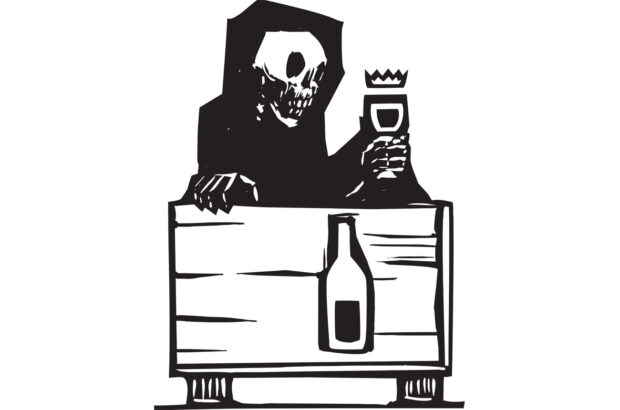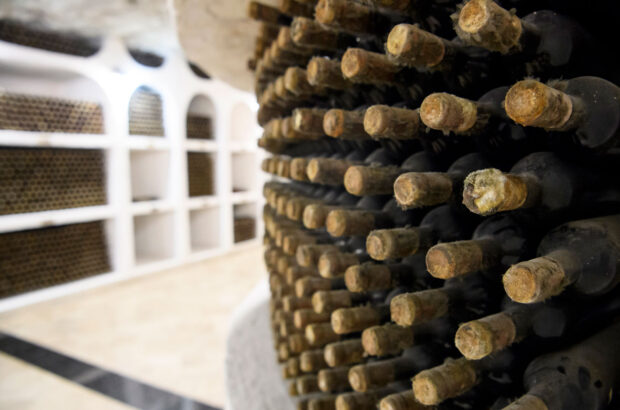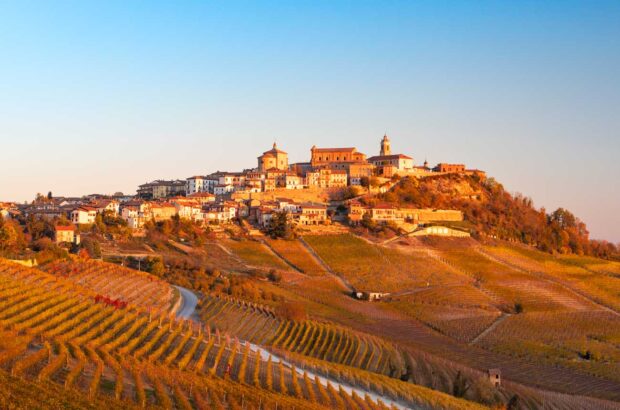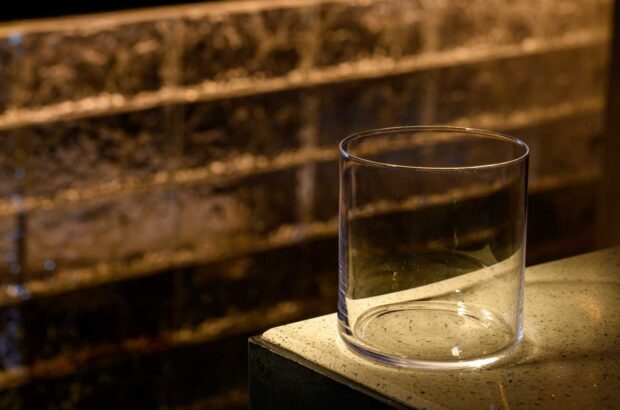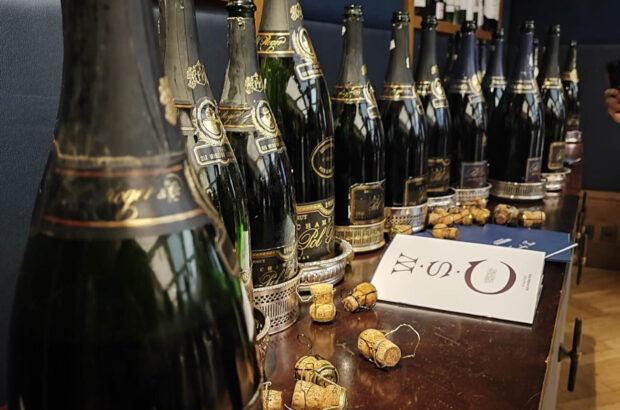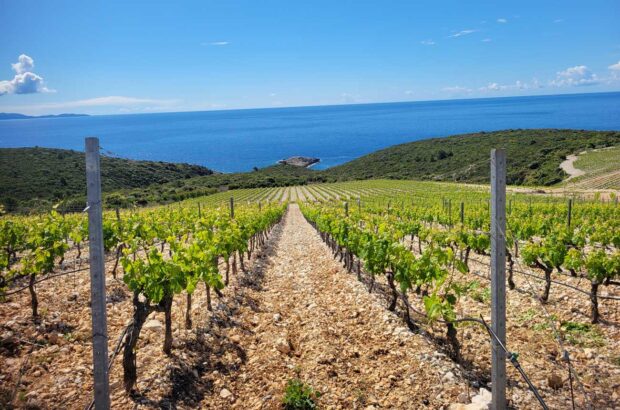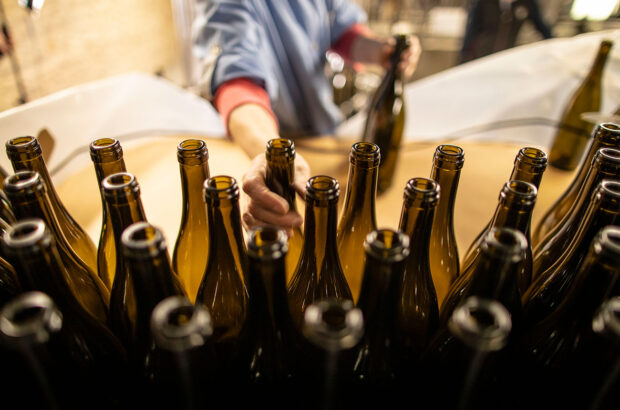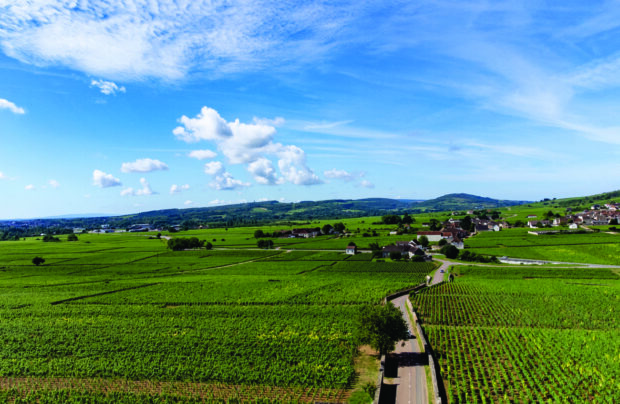What we have in mind when we talk about ‘fine wine’ is European – bottles of French, maybe Italian, maybe Spanish origin. Even in the US, a country not lacking in ego, European wines have long been hailed as the hallmark of quality.
‘Wine has never been embedded in the American lifestyle the way it is for so many Europeans. It’s a luxury product, not an art form tethered to day-to-day life,’ says Axel Borg, the distinguished librarian emeritus for food and wine at the UC Davis Library (a title just as hard-won and venerable as it sounds).
DWWA results out 19 June!
Be the first to know: Subscribe to the DWWA newsletter
It goes without saying, however, that American wine arrived on the scene at a bit of a temporal disadvantage. European winemakers began to cultivate vines and generational traditions long before we’d even entered the arena, but in addition to the timing deficit we also have Prohibition to blame – essentially an involuntary reset button for much of the US wine industry.
‘Wine has always had cultural cachet, cultural value, cultural capital,’ says Borg. ‘And after Prohibition, the state of domestic wine was so abysmal that it had the opposite effect.’

A fleet of trucks outside the California Wine Tonic Co premises in Los Angeles, 1931. Credit: Dick Whittington Studio / USC Libraries / Corbis via Getty Images
Lasting damage
Say what you will about Prohibition – call it destructive, misguided, generally disastrous – its impact on the American wine industry was catastrophic. And, with regard to the reputation of domestic wine in particular, it’s entirely possible that we’ve yet to undo that damage.
‘By the 1880s, it was no longer disputed that California had the potential to produce great wine. And by the start of Prohibition in 1920, there were hundreds of wineries – 719, to be specific – in operation,’ says Vanessa Conlin MW, global head of wine at Sotheby’s.
‘Then, with the start of the Volstead Act, aka Prohibition, quantity became more important than quality to grape buyers. Prohibition all but killed the wine industry in a number of major production states.’
When the 18th Amendment to the US Constitution was ratified in 1919, prohibiting the sale of ‘intoxicating liquors’, Californian wine had been on a rather shiny trajectory. By the time the Volstead Act (formally the National Prohibition Act), which executed the amendment, came into effect the following year, local winemakers had well over 600,000hl of wine ready to go (1919 had, ironically, yielded quite an impressive harvest). Tragically, however, they had no way to sell it… not legally, anyway.

A group of men dump wine from barrels into a drain in Chicago in 1921 during Prohibition. Credit: Chicago Sun Times / Chicago Daily News Collection / Chicago History Museum / Getty Images
‘My great grandfather came over here in the 1870s, and he was a true pioneer in terms of growing grapes,’ says Darek Trowbridge, owner and head winemaker at Old World Winery, a low-intervention wine producer based in Sonoma County. ‘And when Prohibition came about, he came home one day to find that government officials had padlocked his barn shut. It seemed like he’d simply lost access to his property and his equipment – his livelihood.’
Fortunately, there were loopholes available to those crafty enough to risk dispensing their goods illegally (wine dealing, if you will). ‘The Volstead Act prohibited the sale of alcohol, but not its consumption – which left room for “home winemaking”, as well as wine that could be made and sold for sacramental purposes, or prescribed by medical professionals,’ says Borg. And as he explains it, plenty of archival data regarding wine prescriptions lives on (Paul Masson Mountain Winery in Saratoga, near San Francisco, for example, was specifically permitted to continue producing ‘medicinal champagne’ – the medical merit of which surely still holds up).
Sizeable quantities of grapes were still being shipped across the country, thanks to the ‘home winemaking’ loophole. But needless to say, fine, commendable wines were not the goal. Instead, merely potable alcohol would do – and in turn, vineyards grubbed up their higher-quality grapevines and replaced them with varieties whose fruit was sturdier and capable of surviving shipping without visible damage.
Consequently, when repeal took place in 1933, wineries were hardly equipped to bounce back. In fact, to meet the post-Prohibition demand for California wine, local producers began to turn out deeply flawed wine using sub-par grapes and tainted or antiquated equipment. ‘It’s fair to say that the wine was, well, appalling,’ says Kathleen Burk, professor emerita of modern and contemporary history at University College London. According to her research, in the year following repeal the number of operational wineries surged, only to plummet again to just a couple of hundred within four years. Which was to say, California’s prodigal return to the wine world was tepid at best – humiliating at worst.

A tractor from the New York-based National Liberal Alliance, which campaigned to modify the Volstead Act to allow people to drink ‘light wines and beer’, gathering petitions in Washington DC in April 1926. Credit: George Rinhart / Corbis via Getty Images
A new normal
There was, however, a silver lining. ‘It was only after repeal that folks in California – UC Davis in particular – decided to allocate resources towards rebuilding the local wine industry to its former glory – maybe beyond its former glory,’ says Borg.
After it was established in 1935, the current Department of Viticulture & Enology at UC Davis focused on combining the more scientific tenets of viticulture with the more sensory elements of oenology. According to Borg, the department was deeply invested in exploring the relationship between regional grapes and climate, as well as analysing local grape varieties to determine which were worth using. He cites an extensive study by professors Amerine & Winkler, published in the Hilgardia journal in 1944, for which they produced thousands of wines from grapes grown all over California, eventually concluding that the majority of the varieties in question were not viable for commercial
winemaking. ‘Whether they’ll admit it or not, many of those scientific findings are also likely used by European winemakers today,’ he says.
By the late 1930s, another stakeholder had come into play: the media. And at the forefront of wine publishing was a writer by the name of Julian Street. ‘Not only was Street a major wine educator at the time, but throughout his work, you could find his plea for the American public to take wine seriously when most were solely drinking beer and spirits,’ says Audrey Russek, food and wine archivist at UC Davis Library.
As she puts it, Street’s work was centred on the notion that many European countries had grown to consider wine as a quotidian pleasure, practical as much as aesthetic – while in the US, it never occupied such a role. Instead, it was decadence manifest, hardly meant to be incorporated quietly into the machinations of day-to-day life.
‘When we talk about alcohol consumption for early colonists, it’s about “taking the edge off”. It’s medicinal or it’s numbing,’ says Russek. ‘We became a spirits country because drinking was always a means to an end.’
A corner turned

Credit: Susanna Blavarg
By the 1960s, California wine had begun to grow legs again (forgive the pun). ‘In the 1940s and ’50s, sweet wine, often fortified, outsold dry wine three to one, and Americans were drinking mediocre, sweet wine rather than dry,’ Russek says. ‘But by the 1960s, as the wine continued improving, the regional palate skewed back towards drier and more balanced wines.’
In terms of PR, few events boosted the American wine ego quite like the Judgement of Paris tasting, the highest-drama occasion in the US wine world since, well, the ratification of Prohibition. ‘When Chateau Montelena won the Judgement of Paris in 1976, we’d only been rebuilding under that name for a few years – it was our 1973 vintage,’ says Matt Crafton, the current head winemaker at Chateau Montelena. ‘We were still finding our own feet – but that gave us so much optimism.’
In any case, despite Chateau Montelena’s very public victory, as well as the continued evolution of the wine media, we’ve yet to fold American wine into our conception of patriotism; it remains excluded from our national identity (which is to say, we’re far from adopting the whole ‘practical over aesthetic’ philosophy as regards wine consumption). Then again, perhaps the problem here is not one of comparisons.
‘Sure, Europe has generations of winemaking knowledge to draw from, but an advantage to being a relatively young industry – and I say “young” with scare quotes – is that there’s no template,’ adds Crafton. ‘We have a tremendous amount of creative freedom. It’s the ultimate meritocracy: winemakers are made, not necessarily born.’ And for what it’s worth, in a nation that prides itself on a ‘pull yourself up by your bootstraps’ ethos – the American Dream – it’s only natural that we would build a wine industry that subsists on the same principles.
It’s far from controversial to suggest that American wine is not and never will be European wine – no matter how many Burgundy producers schlep to Oregon to celebrate the terroir. But in a country where the wine industry has reincarnated itself in less than 100 years, there’s ample proof of the restored, even improved, quality of local winemaking (and it’s a distinctively American endeavour to build an industry up from scratch).
‘At this point, our obsession with French wine surely has more to do with European wine culture than it does with the wines themselves,’ posits Borg. ‘So if we’re discussing the reputation of American wines, it would seem that the culture must change, not the wines.’
For winemakers, that change is more an imperative than a suggestion. ‘American wineries are struggling right now. We have a huge amount of inventory and a huge decrease in sales,’ Patrick Cappiello of California’s Monte Rio Cellars said in a viral Instagram plea in February. ‘We are asking you for one thing, and one thing only: buy our wines–drink our wines.’



